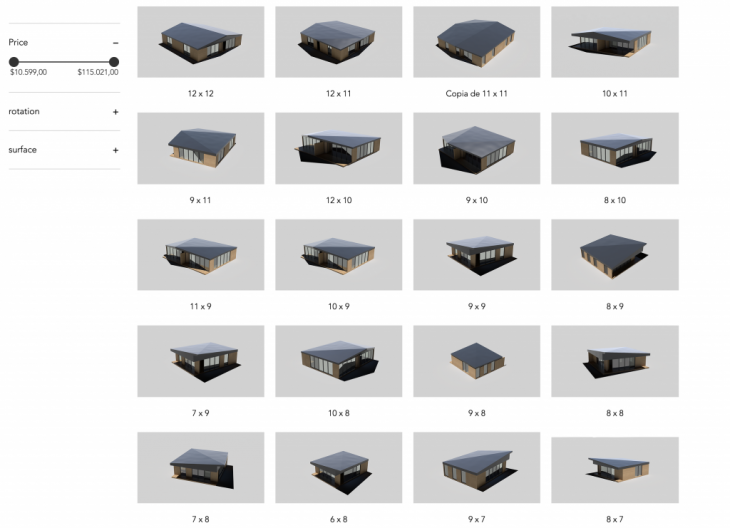ARE ARTIFICIAL INTELLIGENCE-BASED ARCHITECTURAL DESIGN TOOLS A CONTEMPORARY WAY OF PROMOTING COLONISATION?
Abstract.
Artificial Intelligence-based design is constantly seeking optimal or best solutions based on objective performance criteria that feed the design processes, generating highly precise- or not- outcomes, which in most cases are settled as a grounded truth. Nevertheless the closed structure of certain Artificial Intelligence models that don’t “accept” features or attributes that were not initially used to train the models, express the static and rigid answer of that truth. This essay presents the argument that the validation of AI-based answers should be based on how receivers interpret the data of the messages, promoting diversity instead of standardization, so they can become truly global tools and not just as a contemporary way of colonizing through design.
Introduction.
The platform AI Philosopher (Figure 1) can answer different questions done by humans with a very precise grammar structure and narrative coherence. In some cases, the answers are supported by references giving a humanized sense, nevertheless, the content of the answer might be interpreted and/or critically and scientifically analyzed in order to decompose if the answer is valid or invalid. Transferring the validation in the capacity, experience, or knowledge of the receiver over the objective content of the message. Without controlling what is right and what is not, and what a receiver can interpret from the signals of a transmitter.
Somehow, the strength of answers is not within the message itself, it is the way the message answers questions. Based on the Body Machines of Fritz Kahn the individual reminiscent of previously known images and messages, meaning- or what is right and what is not right- can not be defined as an absolute. Answers to questions made to an Artificial Intelligence Philosopher are wrong or right depending on previous knowledge, experiences, and feelings.

Figure 1. AI Philosopher.
AI-based Architectural Design tools.
Artificial Intelligence-based design tools open new spaces of exploration and scientific approximations to develop architectural outcomes that can vary from the scale of materials geometry to urban planning. In all cases, there is a continuous search for the “most optimal”, ”suitable” or “precise” solution for specific problems or user requirements. The critical point is not about the solution itself, is about who and how it is that specific solutions are validated as “the most performing” or “precise”, as a matter of this discussion is not if a project is well solved or not, the aim is to open a critical discussion if a set of data can be interpreted as valid solutions by uses.
Data is an abstraction that, in order to inform, needs to be crystallized as in a perceptible interaction (Maturana & Varela, 1972). Once data becomes interactive or perceptible to humans, we can give meaning, which will vary depending on the cultural, social, economical, and environmental contexts of the interpreter.
Algorithms by themselves mean nothing, they are just the intelligence of how new organizations and relationships might emerge. Every natural or artificial organization has implicit information associated with phenomena that allow them to be what they are, excluding any other potential possibility of becoming other elements (Thomson, 1966). This means that we can only interpret an Artificial Intelligence algorithm outcome based on our experiences, and that outcome will potentially be interpreted from a different perspective by another person. There is no one absolute answer in human society.
AI-based solutions as grounded truths.
Variation gives a gradient continuity promoting heterogeneity instead of rigid and static development (Oxman, 2012), embedding its material characteristics, geometric behavior, manufacturing constraints, and construction logics by integrating a wide understanding of form, structure, and behavior (Mengues, 2011).
The way we operate with data is similar to how cybernetics and information theorists saw information as a quantifiable and measurable entity (Wiener, 1965) which can be understood as a defined travel trajectory from a transmitter to a receiver. As a counterview to this mechanized relationship, the idea of pre-individual field (Simondon, 2007), where information itself has no meaning in terms of a structural relation within a closed system.
One key characteristic of Artificial Intelligence models is specificity and its incapacity of solving issues beyond the components used for its training. Geometrical problematization or any urban predictions requires an important amount of data to generate results (Figure 2), a task for prepared professionals or cities with robust digital infrastructures and platforms. Conditions only exist in developing countries.

Figure 2. PREFABRICATED AI HOUSE GENERATOR. Ghazaly, Kyunghwan, Villanova, Vivanco. 2021.
World wide massive solutions developed within those contexts to become a universal tool, without considering variety, integration of cultural, perceptions, and local variables might become then a new way of colonizing, similar as international architecture has done in the past 30 years.
Conclusions.
The only constant condition in nature is changing, computational design gives the illusion of predicting the future in order to design the most suitable solution for that condition. An open algorithm allocated in digital platforms can constantly interact with stochastic environments in constant flux, nevertheless, physical outcomes as architectural elements or houses are static algorithms that can only interact through the features in which it was designed. One of the contemporary challenges in architectural design practices is to generate specific solutions for wicked or massive problems that can recognize and integrate the diversity of cultures, geographies, and needs. The cultural production of architectural products should be solved as AIPhilosopher, transferring the validation of the solution to the user who is receiving it.
References
- AI Philosopher. Webpage: philosopherai.com
- Baars, B. 1988. A Cognitive Theory of Consciousness. Cambridge: Cambridge University Press. 1988.
- Iliadis, A. Individuation: Deleuze’s Simondon Connection. Media Tropese Journal Vol IV, No. 2013.
- Maturana, H.; Varela, F. Una teori?a sobre la organizacio?n biolo?gica. Editorial Universitaria. 1972.
- Menges, A. Computational Design Thinking. 2011.
- Oxman, N. Material Computation. John Wiley & Sons Ltd. 2012.
- Simondon, G. L’individuation psychique et collective.Paris: Editions Aubier. 2007
- Thompson, D. GROWTH AND FORM. Cambridge University Press. 1966.
- Wiener, N. Cybernetics, second edition: Or the control and communication in the animal and the machine. Cambridge: MIT Press. 1965.
Artificial Intelligence for Architecture- MaCAD // Institute for Advanced Architecture of Catalonia
Barbara Villanova
Basel Ghazaly
Kyunghwan Kim
Tomas Vivanco
Faculty: Zeynep Aksöz, Mark Balzar